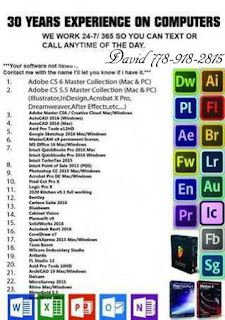

- #BACK UP IPHOTO USING IPHOTO LIBRARY MANAGER ARCHIVE#
- #BACK UP IPHOTO USING IPHOTO LIBRARY MANAGER SOFTWARE#
- #BACK UP IPHOTO USING IPHOTO LIBRARY MANAGER TRIAL#
- #BACK UP IPHOTO USING IPHOTO LIBRARY MANAGER SERIES#
Please read the rest of this article before executing the next step, which will take quite a bit of time and disk space.

Next, run a PhoShare export that copies photos (and events, keywords, ratings, faces) from the Mac system/disk over to the Windows system/disk. I used iPhoto Buddy (described earlier) to split my library into 5 smaller libraries that are a few gigabytes in size with a few thousand photos in each. I am running PhoShare to liberate my photos from iPhoto.
#BACK UP IPHOTO USING IPHOTO LIBRARY MANAGER ARCHIVE#
As long as we don’t edit any photos in the archive (but viewing and exporting is OK), we don’t have to worry about and data corruption/loss due to the migration. Then, we can take time to migrate the older “archive” libraries, while still adding and editing photos in the last library with our current photos. It’s important to engage iPhoto Buddy long before your hard drive fills up, because you’ll need to temporarily make 2 copies of your iPhoto library, and you’ll want to work on your primary (fastest) storage disk.Īnyway, the general plan is to duplicate your iPhoto library, and then remove complementary chunks from each, creating two smaller libraries whose photos/albums/events combine to equal the original library. If you are feeling confident and are willing to pay up front, I think it would be a good tool.)
#BACK UP IPHOTO USING IPHOTO LIBRARY MANAGER TRIAL#
( iPhoto Library Manager could help too, but the free trial version didn’t work for me. With iPhoto Buddy, we can split one giant iPhoto Library into several min-libraries. IPhoto Buddy is the first part of the solution to these challenges. I want to migrate my photos over time, while keeping my ability to process new photos without mixing up or losing anything. So, I need to split off an “archive” library.
:max_bytes(150000):strip_icc()/002-manage-photos-with-multiple-iphoto-libraries-2260764-f481c6004f664714b8021a746cabdb74.jpg)
#BACK UP IPHOTO USING IPHOTO LIBRARY MANAGER SOFTWARE#
I have a 120GB hard drive, which can’t hold all my software and movies and music and photos. I have too many photos for my Mac laptop hard drive. I have ~20K photos, but iPhoto can only handle about ~5K before it gets sluggish and crashy. I have too many photos to fit in an iPhoto library. I have a few challenges with iPhoto, which were part of the reason for my switch from a Mac laptop to a Windows desktop: This post discusses how I moved my photo libraries from Mac iPhoto to Windows.
#BACK UP IPHOTO USING IPHOTO LIBRARY MANAGER SERIES#
Change the value from "false" to "true".This is part of a series of posts in which I document my “switch” from Mac to Windows. – Check the iPhotoLibrary value in the document.

– Right-click on the ist and choose Open with -> Other -> TextEdit.app. Right-click on the library and choose "Show package contents". – search for the iPhoto Library in the Picture Folder. If this happened after an update, do the following: This function creates a new library without affecting the old one, so you can still use the old one too.ģ. It will not iclude slideshows, books or calendars but albums and keywords should be rebuilt. A new library will be created from the data in the albumdata.xml file. Download iPhoto Library Manager () and use this to rebuild. From Automatic backup, choose Rebuild iPhoto Library Database.Ģ. Hold down the Command and Option keys while launching iPhoto and rebuild using the dialog that appears. Back up the library and try to rebuild it.


 0 kommentar(er)
0 kommentar(er)
